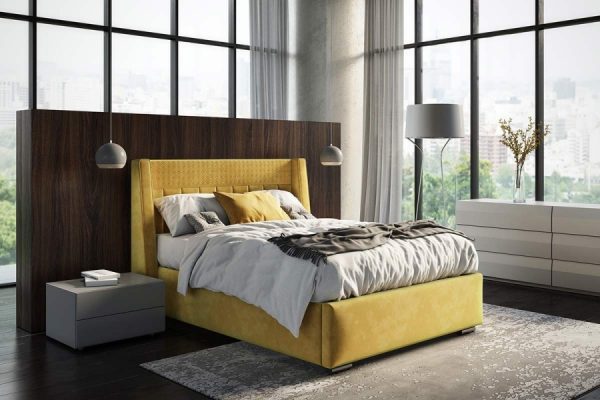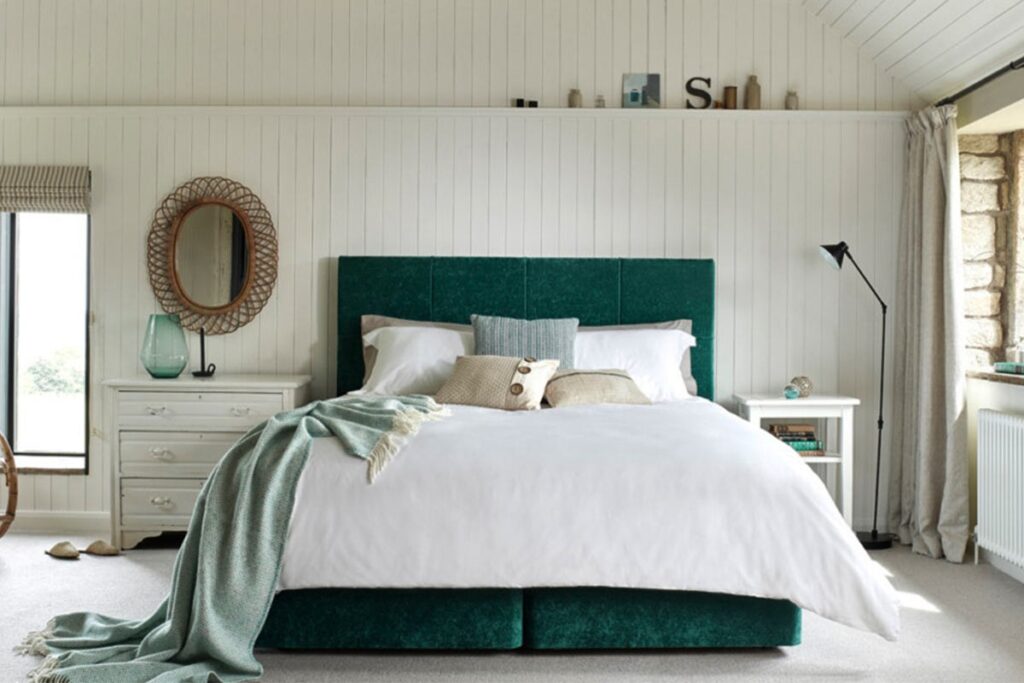How to choose a bed? If you’re looking to refurbish your bedroom this might be one of the many questions you’re asking yourself. Choosing the right bed can seem like an overwhelming or even impossible task due to the wide range of models available out there.
If you’re stuck wondering how to choose a bed, we’re here to help. Our complete bed buying guide can give you some ideas on what to look for when you have to choose a new bed. From deciding on your budget to navigating all the different sizes and types of bed, read on to find out how to choose a bed.
6 Steps to Choosing a Bed
Determine Your Budget
Deciding how much you want to spend on a bed can help instantly narrow your options. With such a huge range of beds with different features and from different materials, a new bed can cost you anywhere between £100 to £2000.
If you’re splurging on a new mattress as well, it’s understandable that you might be tempted to go for the cheapest option available. However, it’s also important to carefully consider all your options and get a good quality product for the price you pay.
Sleep is important for your mental and physical health so the last thing you want is buying a cheap bed that will start creaking after a few months making it impossible to fall asleep.
But how do you know if a bed is good value for money? Here are a few things to look out for:
- Material – The first thing to look out for is the material of the bed you want to buy. If you want a bed that offers longevity you should be looking for a frame made out of metal or solid wood, rather than upholstered wood composite or plastic.
- Construction – Next look at the construction of the bed. Does it come pre-assembled or would you have to do it yourself? If you have to put your new bed together yourself, think whether it would be difficult and if you have all the needed tools for it.
- Support – Another important thing to look out for is support. Without adequate support your mattress will sag over time. Try to choose a bed with extra support underneath if you want to enjoy your mattress for longer.
- Stability – In an ideal case scenario, you want a bed that doesn’t creak when you put weight on it or move side to side when pushed, so make sure you choose a bed frame that has traction and support where it rests on the floor.
- Headboard – When looking at the options, you’ll also need to decide if you want a headboard. While a headboard can provide extra support while you’re sitting in bed and prevent damage to your wall, it’s not a necessity and not having one can save space in a small bedroom.
With all this in mind you’ll be able to select a bed that fits your budget and your taste, while avoiding overpriced options that promise excellent quality but aren’t backed by excellent construction.
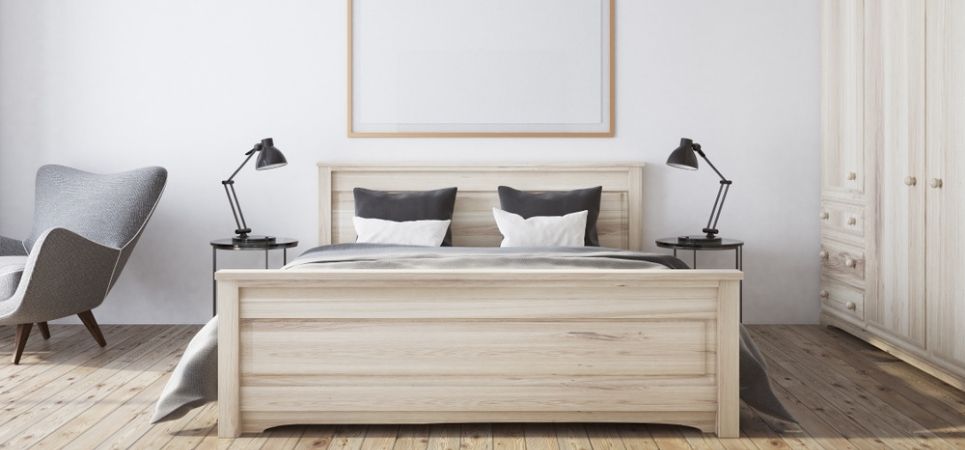
Make Sure You Get the Right Size
Selecting the right size bed is important if you already have the mattress for it. If you’re on the market for a new mattress, however, you have a lot more flexibility, in which case you want to consider your needs and the space available in your room.
There are a few different sizes of bed frames designed to fit the standard mattress sizes.
- Single – This is usually the smallest option available on the market. It’s perfect for a single child or adult and fits in smaller rooms. A typical single bed measures 3’ x 6’3” (90cm x 190cm).
- Small Double – The next size up in between single and double, this bed size is suitable for a more grown up child or an adult that needs more space. A small double is ideal for rooms where space isn’t a limitation. Beds of this size measure 4’ x 6’3” (120cm x 190cm).
- Double – A double sized bed can comfortably accommodate two adults and is a perfect alternative to a king sized bed in a small to medium bedroom. Double beds measure 4’6” x 6’3” (135cm x 190cm).
- King – This is one of the most popular bed sizes as it’s not only big enough for two people but has some extra room. A king size bed is suitable for a larger room as it takes considerably more space.
- Super King - Super king is the largest among the most popular sizes. This type of bed is perfect for a big bedroom where you want the bed to be the star of the show. Super king size measures 6’ x 6’6” (180cm x 200cm).
There are even bigger sizes available on the market, such as the 200 x 200 size, if you require a larger bed to accommodate your needs. You can have a look at our size guide for further help with bed and mattress sizing.
When selecting your bed size it’s a good idea to work around your needs and the size of your room. If your bed will go in the centre of your room make sure you leave enough space to comfortably walk around it. The general recommendation is to keep at least two feet on each side of the bed.
Choose Your Preferred Height
Another important factor to consider about your bed is its height. Most beds come at a height that reaches your knees but there are certain situations in which you might need a bed that’s higher or lower.
For instance, if you have restricted mobility you want to choose a bed that you can easily get in and out of, so it shouldn’t be too close to the ground. This is also something to consider if you have little ones that like to climb into bed with you.
An easy way to determine your preferred bed height is by finding a chair where your feet rest comfortably on the ground when you’re sitting down and measuring its height. The combined height of your bed frame and mattress should match this height.
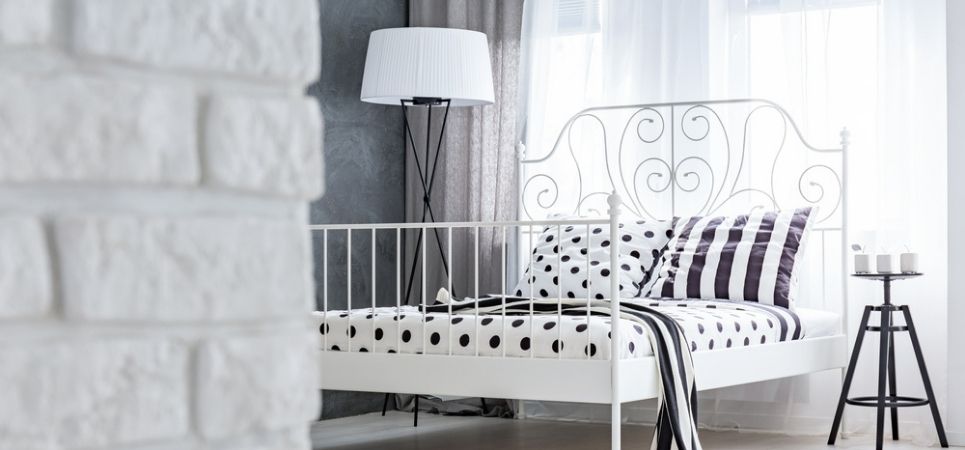
Decide if You Need a sprung base
Traditionally older mattresses require a sprung base, so when choosing a bed you might be wondering whether you should be getting one with your new bed.
If you have a mattress with a sprung base and plan to be using it then it’s a good idea to find a bed frame that can accommodate both. But if you don’t have a sprung base already, you’ll be pleased to hear that modern beds when paired with a standard mattress don’t need one.
If you require extra support for your mattress you should look for beds with a mattress foundation or platform beds that prevent your mattress from sagging.
Consider Your Room Décor
Once you have narrowed down your bed choices enough, you can consider what style of bed will suit your room’s layout and interior décor. If you want to create a cosy and traditional atmosphere you might want to stick with more traditional bed options such as a classic wooden bed frame or a soft upholstered divan bed.
On the other hand, if your room is more modern, you might prefer a sleek metal frame or a platform bed without a headboard.
Browse Around for Different Beds
After determining all the different important factors your new bed needs to meet, it’s time to look at the different models available on the market. All the work you’ve done so far will help narrow down the broad category to a few sensible choices that match all your criteria.
Now you can confidently browse the beds that meet your needs until you find one you like. Here at My Next Mattress we have a variety of beds in different styles, aesthetics, sizes and materials including:
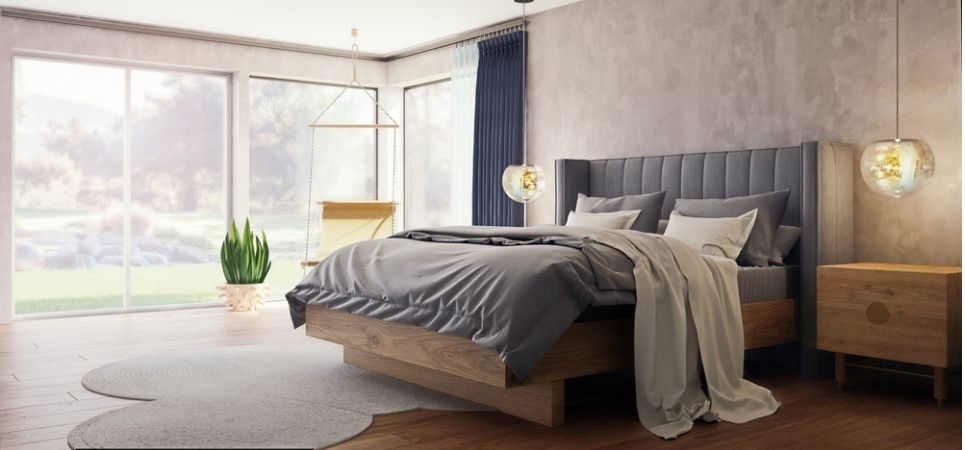
How to Choose a Bed With Extra Storage?
If your bedroom is on the smaller side and you’re looking for a bed that can double up as storage your best option is either a divan bed or an ottoman. While both types are similar to each other in the fact that they feature integrated underbed storage, there are slight differences.
A divan bed usually has drawers on the side that pull out so you can store your clothes, bedding or other items in there. An ottoman on the other hand has a platform that lifts up to reveal extra storage space.
Conclusion
Knowing what to look for in a bed is important for choosing the right one for your bedroom. We’re hoping that our guide has helped you feel more confident in selecting a new bed. If you still have questions or you need extra help in making a decision, our team is happy to help. Contact us today!
